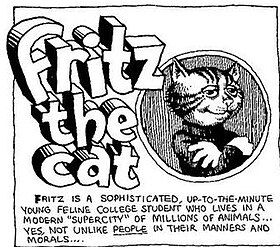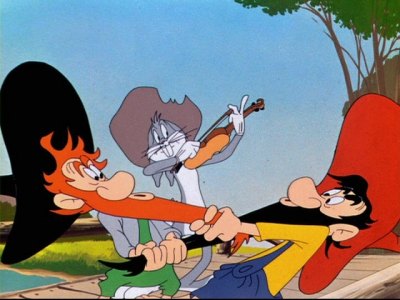I was visiting my friend in Ohio, and we went to the Akron art Museum. There was this one piece that stuck out in my mind and that I think correlates to the reading. Unfortunately, I’ve been searching for it all day and I just can’t find it. I’m sorry! I’ll describe it to you. It was a very simplistic piece. It hung on the wall and was white lettering, set against a black background. It had the word white and then the word black on it with their respective definitions. White- the color of milk or fresh snow, the opposite of black, free from color, free from spot or blemish, morally or spiritually pure innocent and untainted. Under this definition ran the definition for the word black: black- the very darkest of color, the opposite of white due to the absence of light, dirty, soiled, characterized by hostility or anger, full of misery or gloom, very evil or wicked, connected to the devil. That was it.
Not only do we overuse the word grotesque so as Paseo de Peralta suggests, it becomes a jaded slang term in our general repertoire of vocabulary, we also use it in a very single minded way. In general the term grotesque is used so that it is synonymous with the word disgusting, however it is more complex than we give it credit for. Grotesque however can also mean disordered (out of place), unique strange. Peralta mentioned that there must be a contradiction involved for something to be grotesque. Also, that “ that conflict must already exist within the mind of the beholder such that the confusion stems not only from the anomaly to which we bear witness in the world, but the anomaly that is revealed with in us. I think this is why we are so compelled, so sated by the grotesque, at the same time as being disturbed by it. It’s always satisfying to have an emotion we have felt represented well in a phrase we read or in an image we observe. It gives us something physical that we can relate to, something on the outside, visceral world that our elusive internal states can reach out and clutch onto, so that they themselves can achieve greater density and reality and become less like air. There is solid evidence that our emotion exist beyond our whimsical fancy that it may do so. Accordingly, we are drawn to the grotesque we encounter, for it is an extreme version of the grotesque within.
I consider the art piece in the Akron Art Museum to be grotesque for precisely this reason. On seeing the word black and white paired up right next to each other we make them representative of people instead of just colors or words. One becomes all too uncomfortably aware that the words absence of light, soiled, and evil being associated with the term black and the terms pure spotless and light being associated with the term white. Also they are set up as opposites, which work for colors but not for people. On one level they are just definitions for words: He was black with rage, her sole was white and pure. However our knowledge of Caucasians mistreatment of African Americans in this country: slavery, to segregation, to African American (as well as other minority groups) continued quest for equality, makes those two words charged. One asks: is black connected with evil merely because we can not see with the absence of light, and accordingly we distrust the dark, or is it proof that our language itself holds hidden prejudices on what it means to be a dark skin or light skinned. The piece is charged in our minds because of our history as Americans and our knowledge of that history, we have grown up with the minority acts and stories of cops type casting African Americans, or bosses who are sued for firing an employee based on race. It is a sensitive topic in our error and almost magnified in our minds due to our constant awareness of it, and efforts not to offend anyone.
The piece is particularly effective because it causes us to question ourselves. We start to feel guiltily that our minds jumped to race and people when the piece was only referring to a word. Do people use these terms as proof of racial superiority? I use those terms, am I then prejudice because I recognized these words as people instead of just words. But I don’t believe these definitions are true on any level in reference to people? Do I believe I am superior on any level? Prejudice here is the grotesque, and its brought to us in this rather second hand way though the use of two words and their respective definitions, our mind however makes the jump connecting the two. It strains toward the word prejudice as well as steers away from it with an equal intensity. It’s almost a coal, too hot to touch, so that in the end we have are afraid to look at our own thoughts on the subject, afraid we may find a monster there.






































 I was unable to post the actual video, but here is a link to the full cartoon:
I was unable to post the actual video, but here is a link to the full cartoon:

